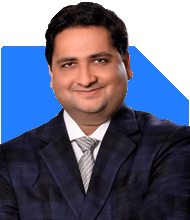I am 32, earning Rs 2 lakh per month with a home loan EMI of 57,000 and education loan EMI of 11,000. I send 30,000 to my parents in Indore. I've been investing 20,000 monthly in SIPs across largecap and flexicap funds. I recently received a 5 lakh annual bonus. Should I use it to prepay my home loan or invest in SIPs for better long-term growth?
Ans: You are 32 years old and already earning Rs. 2 lakh monthly. That’s a strong start. You're managing Rs. 57,000 home loan EMI and Rs. 11,000 education loan EMI. You send Rs. 30,000 to your parents monthly. You also invest Rs. 20,000 SIP in largecap and flexicap funds. You have now received a Rs. 5 lakh bonus.
You want to know whether to prepay your home loan or invest this Rs. 5 lakh in SIPs.
Let us analyse both options step by step, from a full 360-degree perspective.
We will look at all angles and give you a practical plan.
Understanding Your Current Monthly Flow
Monthly income is Rs. 2 lakh.
Home loan EMI is Rs. 57,000.
Education loan EMI is Rs. 11,000.
You send Rs. 30,000 to your parents in Indore.
You invest Rs. 20,000 monthly in SIPs.
Your fixed monthly outgo is Rs. 1.18 lakh.
So, you are left with Rs. 82,000 monthly.
You need to manage your rent, food, travel, savings and other expenses from this.
It shows that your finances are stable and under control.
You also have discipline in investing regularly.
Receiving Rs. 5 lakh bonus gives you a chance to fast-track your goals.
Thinking About the Home Loan
Home loan EMI is Rs. 57,000 per month.
Most home loans run for 20 years.
The interest outgo is very high in early years.
Prepayment in early years reduces interest greatly.
Prepayment does not attract any penalty in most home loans.
But if you claim full home loan interest benefit under Section 24, check tax impact.
Full deduction up to Rs. 2 lakh per year is allowed.
If you prepay too much, you may lose some of this tax benefit.
Also, home loan gives long repayment term. That gives cash flow flexibility.
So, we need to evaluate if locking bonus into prepayment is the best use.
Education Loan Angle
EMI of Rs. 11,000 is small compared to income.
Education loans give tax benefit under Section 80E.
You get deduction for interest paid. No cap for years if loan is in active status.
But the benefit continues only for 8 years from start of repayment.
Also, education loan interest rate is often higher than home loan.
If your education loan is old and at high interest, partial repayment makes sense.
Otherwise, it can be kept as is if affordable.
Benefits of Mutual Fund SIPs
You already invest Rs. 20,000 in mutual funds monthly.
This is a very good habit.
Largecap and flexicap funds are balanced choices for long-term wealth.
These funds can grow faster than loan savings, over long time.
But mutual funds are volatile. They carry risk in short term.
SIPs work well if invested for 7 years or more.
For long-term goals like retirement, child’s future, or financial freedom, SIP is better.
But lump sum investment must be done only after risk review.
What Is the Best Use of the Rs. 5 Lakh Bonus?
Let us look at multiple good ways to use this bonus.
We will evaluate each angle separately.
Option 1: Use Full Bonus to Prepay Home Loan
You save a large amount in total interest over time.
It reduces EMI burden or shortens loan term.
You reduce stress in monthly cash flow in future.
But the money gets locked in the house.
You cannot access it in an emergency.
It does not grow in value.
It gives guaranteed savings, but not wealth creation.
If you have no emergency fund, this option is risky.
Option 2: Invest Full Rs. 5 Lakh in Mutual Funds
You create long-term wealth from this bonus.
Over 10 years, this can double or more.
You can use this later for a big goal like early retirement.
But mutual funds have risk of loss in short term.
Also, no guaranteed returns.
You need to stay invested long term and stay calm during market ups and downs.
If you have no emergency fund, again, this is not safe.
Emergency Fund Comes First
Before you choose prepayment or SIP, ask this first:
Do you have 6 months’ expenses saved as emergency fund?
Your monthly expenses are about Rs. 1.2 to 1.3 lakh.
So, emergency fund should be at least Rs. 7.5 to 8 lakh.
If you don’t have this yet, you must build it first.
Emergency fund should be kept in liquid mutual fund, FD, or savings account.
This gives peace and security during job loss, health crisis or big expense.
This also allows SIPs and EMIs to continue in hard times.
Use Rs. 1.5 to 2 lakh from the bonus to build emergency fund.
This is your foundation.
Ideal Split of Rs. 5 Lakh Bonus
Instead of putting all in one place, do a balanced split.
This gives you safety, peace, growth and loan savings together.
Here is a good model:
Rs. 2 lakh: Build emergency fund (if not already there)
Rs. 1 lakh: Partial prepayment of education loan (especially if interest is high)
Rs. 2 lakh: Invest in mutual funds for long term
This is a 360-degree plan.
It covers immediate safety, medium-term saving, and long-term growth.
It does not lock everything in the house or in markets.
It also keeps your risk low and returns reasonable.
Extra Suggestions to Strengthen Finances
Continue SIPs at Rs. 20,000 monthly.
Once education loan closes, increase SIP by Rs. 11,000 monthly.
Do not stop SIP even after buying a house.
Review your SIP funds once a year with a Certified Financial Planner.
Choose regular funds through a trusted MFD. Avoid direct funds.
Direct funds do not give guidance. They seem cheap but lead to poor decisions.
MFD with CFP helps in fund selection, discipline and rebalancing.
Invest in growth plans only if you are sure of the holding period.
If you plan to withdraw in less than 3 years, do not invest in equity.
Create goal-based SIPs – one for retirement, one for parents, one for your own freedom.
Review all insurance. Have term insurance and health cover already in place.
Track expenses for three months. Cut non-useful spends and increase savings.
Keep bonus or any windfall money for meaningful goals only.
Never mix consumption (like holidays) with your wealth-building money.
Tax Points to Keep in Mind
You will not pay tax for home loan prepayment.
But mutual fund gains are taxed on sale.
Short-term capital gains (within 1 year) – taxed at 20%.
Long-term capital gains (after 1 year) – first Rs. 1.25 lakh gain is tax-free.
Above that, taxed at 12.5%.
So, hold mutual funds for long term to get benefit.
Do not redeem mutual funds in panic or to pay EMI.
Always sell only after 1 year to reduce tax and maximise growth.
Finally
Rs. 5 lakh bonus is a gift. Use it wisely.
Don’t rush to prepay loan just because it feels good.
Don’t invest all into mutual funds only thinking of high returns.
First, secure your base with an emergency fund.
Next, reduce high-interest loans partially.
Then, invest the rest for long-term wealth creation.
This gives you strong financial health.
You feel secure, flexible and confident.
A Certified Financial Planner can review your full plan yearly.
This gives you the right direction in all seasons of life.
Stay invested, stay protected, and keep growing step by step.
Best Regards,
K. Ramalingam, MBA, CFP,
Chief Financial Planner,
www.holisticinvestment.in
https://www.youtube.com/@HolisticInvestment






























